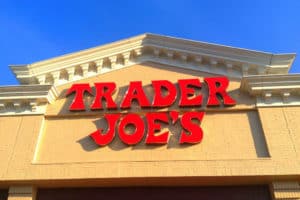Say “au revoir” to your Target shopping bags when you hop over the pond—they didn’t make the flight to Europe. It’s like looking for a bullseye in a land of castles and cafes, but coming up empty-handed.
This post will give you the scoop on why Target hasn’t taken its red carts to European streets, so grab a coffee and let’s unravel this retail mystery together.
Quick Takeaways:
- Target hasn’t expanded to Europe due to complex market dynamics, including strong competition from established retailers, and diverse consumer preferences that favor local and sustainable products.
- Adapting to Europe’s retail scene would require small, community-focused stores, a focus on sustainability, and a blend of localized goods to cater to specific cultural tastes.
- Americans in Europe can find similar shopping experiences at Auchan, Carrefour, Marks & Spencer, and the distinctively Dutch HEMA, each providing a local twist on the convenient, all-under-one-roof shopping concept.
Is Target Operating Anywhere in Europe?
Let’s cut to the chase — no, Target doesn’t have a presence in Europe. The retail giant is an American favorite, known for its red bullseye and wide array of products, but its red carts haven’t rolled out on European soils. For those who might recall, Target did venture outside of U.S. borders when it opened stores in Canada back in 2013. However, this turned out to be a short-lived expansion, as Target packed up and headed back home by 2015, citing a range of operational issues and a failure to resonate with Canadian consumers. It was a surprising retreat that left us all wondering if Target would ever try its hand at another international market again.
Why Isn’t Target in Europe?
Breaking into the European market isn’t a walk in the park. First off, Europe is a challenging playground with heavyweight competitors, market saturation, and distinct consumer preferences. European shoppers have a longstanding loyalty to local brands and stores, making it tough for an outsider to get a foot in the door.
Target’s withdrawal from Canada serves as a sharp lesson in international expansion. This stumble might cause them to tread carefully when considering new markets. After all, expanding internationally is a massive investment and comes with substantial risks. Companies often face cultural missteps, complex regulatory environments, and fierce competition from well-established local players. It’s not just about importing a business model; it’s about adapting to a diverse landscape.
How Does the European Retail Market Differ from the U.S.?
Dive into the European retail sector, and you’ll swifly notice it’s a different beast compared to the U.S. market. For starters, consumer behavior across the pond is quite varied — European shoppers tend to prefer small, frequent shopping trips to large weekly hauls, and they have a stronger preference for local and sustainable products.
European retail giants like Carrefour in France, Tesco in the UK, and Aldi and Lidl, which originated in Germany but now span across the continent, have a tight grip on the market. They’ve carved out their own niches providing a spectrum of products that appeal to local tastes and budgets. These retailers have the home advantage; they know the ins and outs of the European consumer’s heart and wallet.
Let’s take for example Aldi. Aldi’s no-frills shopping experience and push for low prices have captured the budget-conscious segment of European shoppers. Getting a foreign brand like Target to break into that loyal customer base would take more than just a splashy marketing campaign; it would require a deep understanding of local market dynamics and consumer expectations.
And here’s a unique nugget you won’t find just anywhere — Europe’s strong tradition of outdoor markets and specialty shops continues to be a central part of its retail culture. This love for fresh, local, and artisanal goods presents an additional challenge for a large-scale one-stop-shop like Target. It’s not about simply transplanting a store; it’s about fitting into the local retail tapestry.
In summary, while Target has been a powerhouse retailer in the United States, they haven’t made the leap across the Atlantic. They seem to be laying low on the international front, likely due to the lessons learned from their Canadian misadventure and the complex nature of the European retail environment. For now, it seems the bullseye will remain an emblem of American shopping culture, absent from the European landscape where local brands and diverse consumer habits rule the roost.
Could Target Succeed in Europe If They Tried Again?
Analyzing Potential Strategies
Let’s play the hypothetical game for a second. Imagine Target taking a plunge into the European market one more time. What could they do differently to avoid a faux pas?
First and foremost, Target would need to understand the European market like the back of their hand. Europe isn’t a homogenous entity; it’s a rich tapestry of diverse cultures, tastes, and shopping habits. To stand a chance, Target would need a multidimensional strategy tailored to each country. Here’s a game plan they might consider:
Go Local or Go Home : Embracing local products and brands could be a game-changer. Europeans pride themselves on local traditions and goods; Target could capitalize on this by offering a curated selection of local specialties.
Size Matters : In Europe, space is often at a premium. Instead of sprawling supercenters, Target might find more success with smaller, community-focused stores that blend in rather better with local cityscapes.
Sustainability is Key : Europeans typically place a high value on sustainability. Target could ingrain this into their business model, focusing on eco-friendly products and green initiatives, which would resonate well with the eco-conscious shopper.
E-commerce Integration : Online shopping is booming in Europe, just as it is stateside. A seamless, user-friendly online presence coupled with quick, reliable delivery services would be non-negotiable.
Price Point Precision : Europe has a competitive retail market with established discount chains and luxury brands. Target would need to find its sweet spot in pricing—affordable yet not perceived as cheap.
Adapting to Local Tastes
There’s a saying, “When in Rome, do as the Romans do.” Target might do well to take that to heart. Imagine walking into a Target in Paris and finding an exclusive line of French wines, or in Milan, a selection of Italian leather goods. Adapting their offerings could seduce local consumers and give Target that much-needed edge.
Personalizing the shopping experience could also work wonders. Think in-store cafes serving local delicacies, collaborations with homegrown designers, and community events that resonate with the region’s culture. It’s all about creating a sense of belonging—making each Target store feel less like a foreign invader and more like a neighborhood mainstay.
Where Can Americans Find Similar Shopping Experiences in Europe?
Finding a store that ticks all the boxes like Target might be tough, but not impossible. While there’s no carbon copy, several European chains offer a hint of that red-and-white charm.
Auchan : This French multinational retail group has a presence in several European countries. You’ll find a range that closely mirrors Target’s—from electronics to clothing to groceries.
Carrefour : Another French giant, Carrefour offers a one-stop shop for various goods. While its layout and offerings might differ slightly, the ethos of quality at a reasonable price remains the same.
Marks & Spencer : For those in the UK, Marks & Spencer (or M&S) offers a familiar feel, combining clothing, home goods, and gourmet food all under one roof.
What about something truly unique? Well, here’s the scoop that many might miss: HEMA. This Dutch store offers a quirky and distinctly European take on the department store experience. HEMA has a peculiar charm with its own-brand products that range from clothing to food, stationery, and everything in between. It’s fun, it’s affordable, and it’s something a bit different.
In the end, whether you’re an American expat nostalgic for Target, or a traveler curious about the European retail landscape, there are stores out there that provide a similar vibe—each with its own local twist. Dive in, explore, and who knows? You might just find your new favorite shopping spot.







